230 anniversary of the birth of the Russian inventor of electrical engineering Pavel Lvovich Schilling
The inventor of the world's first electromagnetic telegraph and the developer of the first in stories method of electric detonation of mines. The creator of the first in the history of the telegraph code and secret cipher - one of the best in the XIX century. He is a friend of the great Russian poet Alexander Sergeevich Pushkin and the creator of the first in our country lithography (the method of replicating images). Gusar, who participated in the storming of Paris, and the first European researcher of Mongolian and Tibetan Buddhism, diplomat and scholar. All this is the one and only person - Pavel Schilling.
Pavel Lvovich Schilling was born in Revel (today Tallinn) 16 April 1786, in the family of an officer of the Russian army. His father, Ludwig Joseph Ferdinand Schilling, came from an old Schwabian aristocratic family, at some point he decided to enter the Russian military service and rose to the rank of colonel, was awarded the Order of St. George. The mother of the future inventor and scientist was Katarina Charlotte von Schilling, her ancestors moved to Russia during the reign of Peter I. Almost immediately after the birth of the boy, the family moved to Kazan, where the father of the family was transferred to the service.
It is worth noting that at the birth of a baby, in accordance with tradition and origin, Baron Paul Ludwig Schilling von Kanstadt was named. He spent his childhood in Kazan, where his father commanded the Nizovsky Infantry Regiment. At the age of 11 years after the death of his father, he went to St. Petersburg, where in 1797 he was admitted to the First Cadet Corps, where he studied before 1802. He was recorded in the documents as Pavel Lvovich Schilling, it was under this name that he entered Russian history.
After graduating from the cadet corps, Pavel Schilling served in the quartermaster service of the General Staff for a year. After that, until 1812, he was in the diplomatic service as part of the Russian mission in Munich. It is worth noting that after the death of her husband, Paul’s mother re-married the diplomat Baron von Bühler, who in 1802 was appointed Russian envoy in Munich. So, Paul understood the basics of diplomacy under the direct guidance of his stepfather, and his technical abilities began to manifest themselves here. Then he became a member of the Russian military intelligence, in those years, diplomacy and intelligence were intertwined very strongly.
He was expelled from the army on May 21 of the year 1803, and already on May 22 was counted as a Russian diplomatic mission in Munich, even his stepfather, who, according to Suvorov, was awarded the Order of Alexander Nevsky for helping Alpine campaigns, could speed up the work of Russian bureaucrats. Most likely, a promising, educated young man with great talents in topography and mathematical sciences was sent to the capital of Bavaria, who was an ally of France, to get acquainted with the latest achievements in the field of military science of those years. France itself at that time was the world leader in the natural sciences, and the language of world science was French. Revolving in Munich in the highest circles of the world, the young Russian diplomat made his acquaintance not only with military and aristocrats, but also with prominent European scholars. Here he became interested in experiments with electricity and oriental languages.
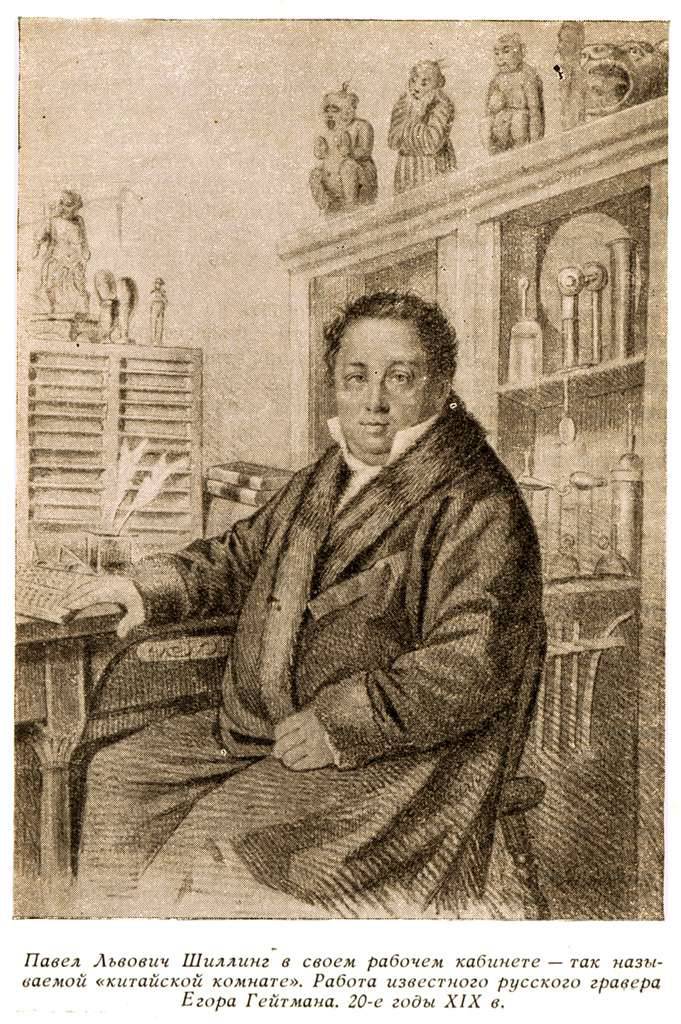
While in Munich, Schilling meets the inventor of the electrolytic telegraph S. T. Semmering and takes great interest in his experiments. Having immersed himself in the field of electrical engineering, Pavel Lvovich makes his first discovery in 1811. He invented a new way to blow up mines. For the explosion of an underwater mine, he suggested using electricity. At that time, mankind was just beginning to reveal the secrets of the movement of electric charges. A variety of "galvanic" experiments were considered only as fun entertainment. However, the Russian inventor suggested that a spark of electric charge could replace a powder wick in military science. The electric current passing through the copper wire created a spark between the carbon electrodes. This spark ignited the coal ignition, and that, in turn, ignited the powder charge, the mine exploded.
These experiments were temporarily interrupted by the beginning of a big war with Napoleon. In July 1812, the Russian embassy was evacuated from Munich to St. Petersburg, where Pavel Schilling immediately offered his invention to the military. He was going to demonstrate the undermining of a powder charge under water. His goal was to create a minefield that would reliably cover the Russian capital from the sea. In the midst of World War 1812, he produced on the banks of the Neva several of the first in the history of experimental explosions of powder charges using electricity. The underwater mine exploded in the presence of Russian Emperor Alexander I. The invention of Shilling was unique, the Americans could use electricity to explode the underwater mine only in 18 years, and the British in 26 years.
The experiments conducted by Schilling testified to the great potential of the mine weapons, but were not appreciated by the Maritime Office. The sailors did not begin to work on the creation of the first types of underwater mine weapons, which could be used in practice. At the same time, Schilling’s invention was apparently used for peaceful purposes: to break the ice and clean the harbor, to save bridges.
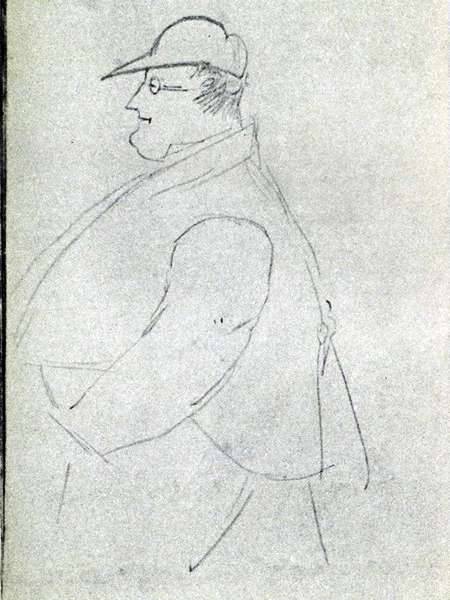
After that, the author of the invention, having refused for a time from his activities and the comfort of the diplomatic service, volunteers to join the Russian army. With the rank of captain-in-chief of the Sumy Hussar Regiment, he went through all the major battles with Napoleon in Germany and France for 1813-1814 and participated in the storming of Paris. In battles, he proved himself a brave warrior. Pavel Lvovich was awarded the military order of the Holy Prince Vladimir with a bow and a saber, on which was inscribed the inscription: "For courage." After the war, he returned to service in the Ministry of Foreign Affairs, working in the Asian department.
In addition to electrical engineering, Schilling was also fond of lithography. In 1817, Pavel Lvovich headed the first lithograph in Russia, which was subordinate to the Ministry of Foreign Affairs. Here they were engaged in compiling topographic maps for the Russian army and Chinese manuscripts. Lithographic stone for creating topographic maps Schilling bought in the German quarries. The value of this work of a diplomat was difficult to overestimate. She played a very important role in cartography, the development of the means of the fine arts, typography, and the production of securities. It should not be forgotten that a lively correspondence played a very important role in diplomatic activity. At the same time the technology of technical copying of documents helped speed up the work and facilitate the work of many scribes.
The creation of lithography for the Russian Ministry of Foreign Affairs was only a visible part of the work of Pavel Schilling. In reality, he was still working on the Secret Expedition of the cipher part, as the department’s encryption department was called that time. It was Schilling who was the first in the history of diplomatic relations to introduce the practice of using special bigram ciphers when a couple of letters were encrypted using a complex algorithm, but not in a row, but in the order of another given algorithm. These codes were so complex that they were successfully used until the development of electronic encryption systems that appeared only during the Second World War. It should be noted that the theoretical principle of bigram encryption was known long before it was introduced by Schilling, however, this code was very laborious and complex for manual work, therefore it was not used in practice before. Pavel Schilling, on the other hand, invented a special mechanical device designed for such encryption - a folding table pasted on paper, which, without any particular problems, made it possible to encrypt digrams.
At the same time, Pavel Schilling further strengthened bigram encryption by introducing so-called “dummy” (encryption of individual letters) and the addition of text with a chaotic character set. In the end, the cipher he proposed became so stable that it would take more than 50 years for European mathematicians to learn how to crack it, which allowed Schilling to earn the fame of the most prominent Russian cryptographer of the 19th century. Just a few years after the invention of its new fonts, not only domestic diplomats, but also military men actively used it.
Versatile and highly educated Pavel Lvovich Schilling took an active part in the literary life of the Russian capital. In St. Petersburg, he spoke with Pushkin, Krylov, Zhukovsky and Turgenev. The well-known name of Schilling was in the field of oriental studies. He studied the languages and history of the peoples of Asia with great interest. For his scientific work in this field, the Russian diplomat and inventor was elected a member of many scientific societies in different countries: in 1822, he became a corresponding member of the Asian Society of France, in 1824 - a member of the British Oriental Studies Association, he was also awarded a diploma of the British Society of Asian Literature , and in 1828, Schilling was elected a corresponding member of the St. Petersburg Academy of Sciences on the category of literature and antiquities of the East.
In 1830, the government commissioned Paul Schilling to organize a large-scale scientific expedition to Eastern Siberia. So in practice he managed to translate his interest in the culture of the East. As part of the expedition, he spends two years in Buryatia and Mongolia, studying the life and culture of local peoples. During this time, Schilling was able to collect a large collection of various literary monuments, including Mongolian, Tibetan, Japanese, Manchu and Indian manuscripts and rare maps that had a very large cultural and historical significance.
Returning back to Petersburg, in 1832, Schilling continued to work on the development of the telegraph apparatus. At the same time, the experiments of Pavel Lvovich were soon crowned with a tremendous success. October 21, with the help of mechanic I. A. Shveikin, he installed the first ever electromagnetic telegraph in Petersburg. It was a six-switch keyboard device with indicators, which were made on the basis of a switch electric galvanometer.
By that time, Pavel Lvovich was fluent in several languages and encryption systems. Based on his own knowledge, he developed a special information-capacious code for his telegraph. This code formed the basis for determining the number of dial gauges in the invented telegraph system. The specially created table of Schilling codes allowed the operator of the receiving telegraph device to decipher the signals transmitted by electrical wires easily into letters, making the text of the transmitted message.
This invention of Paul Schilling brought him recognition and truly world-wide fame. Already in 1835, he was invited to Germany, where he spoke at the congress of the Society of German Naturalists and Doctors, to whom he had already shown his improved invention. In total, there were three known telegraph models created by Schilling. Also, to attract the attention of the person working on the telegraph, he came up with the use of a special call. With his inventions, he gave rise to two directions for the development of telegraph technology: writing machines - with graphic reception of code combinations and devices with visual reception of code combinations.
In 1836, Schilling was offered to build an experienced underground telegraph line for long tests, which was to connect the outermost premises of the Main Admiralty, and in 1837, based on the “highest command,” to build an electric telegraph line between St. Petersburg and Kronstadt. The implementation of this project was prevented by the sudden death of the inventor of 6 August 1837, he was just 51 a year. Pavel Lvovich Schilling was buried in St. Petersburg at Smolensk Lutheran Cemetery. On the house where he lived and died (Field of Mars, 7) after his death 6 August 1901, a plaque was opened in his honor.
Information sources:
http://rus-eng.org/eng/SHilling%20Pavel%20L'vovich.htm
http://www.electrolibrary.info/history/telegraf.htm
http://rusplt.ru/sdelano-russkimi/russkiy-izobretatel-telegrafa-pavel-shilling-18960.html
http://www.inventor.perm.ru/persons/inventor_shilling.htm
http://www.orientalstudies.ru/rus/index.php?Itemid=75&option=com_publications&pub=1593
Open source materials
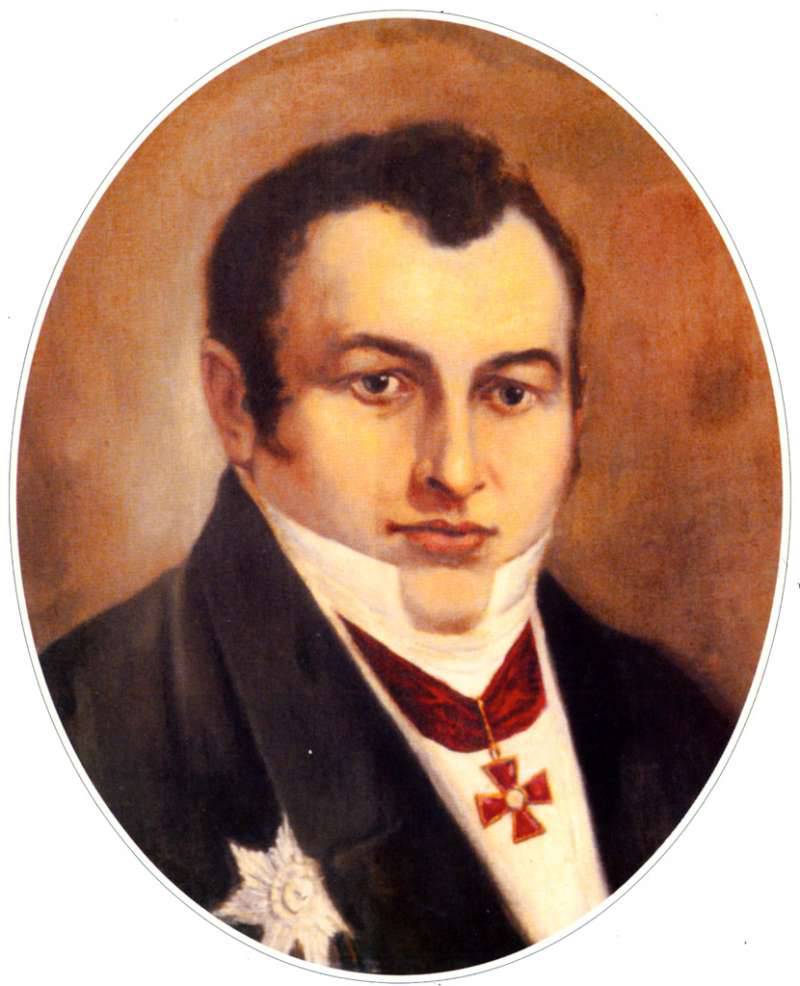
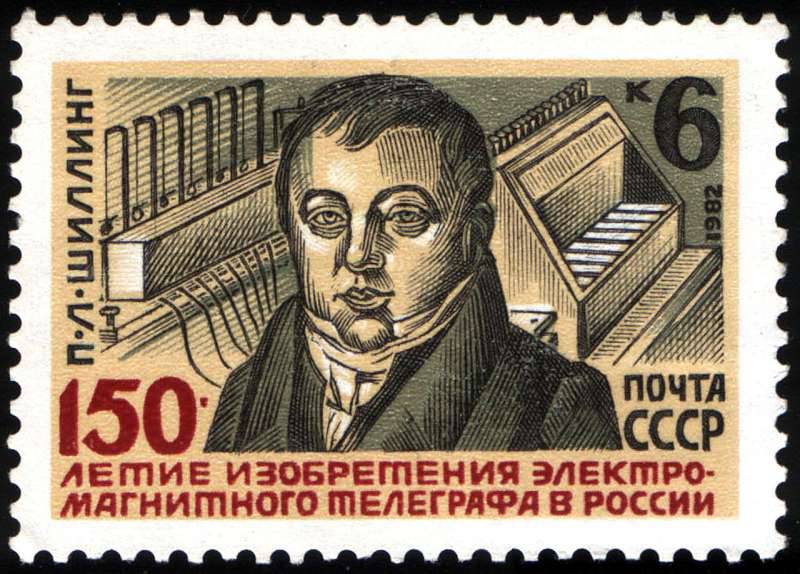
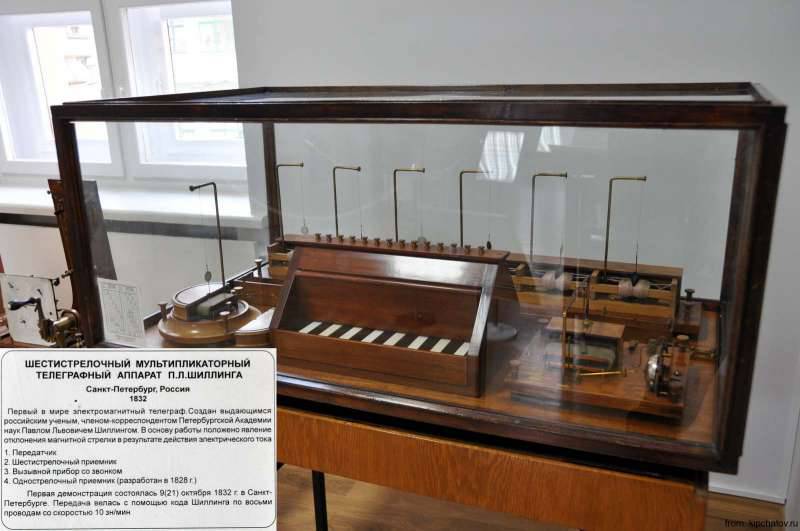
Information